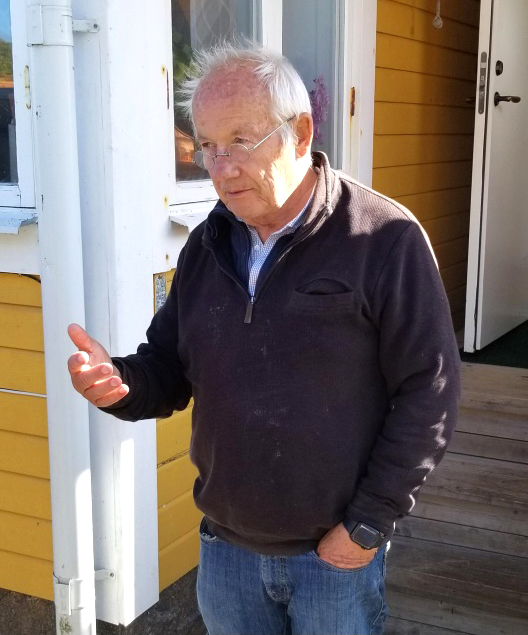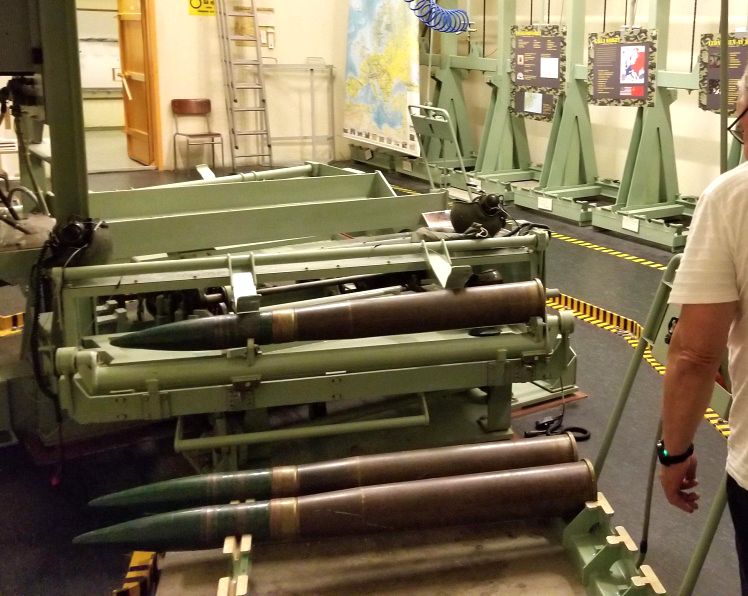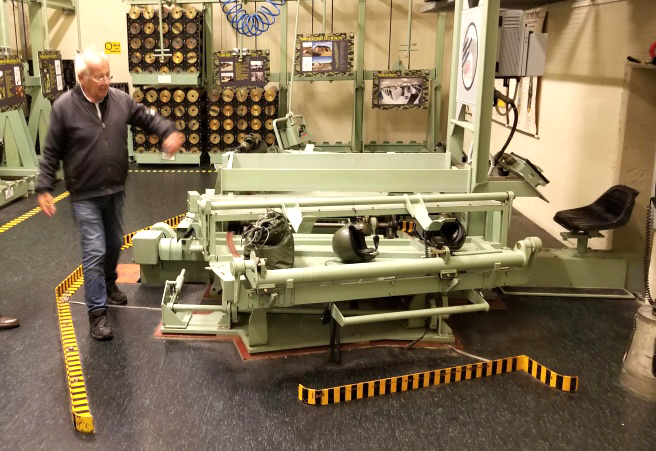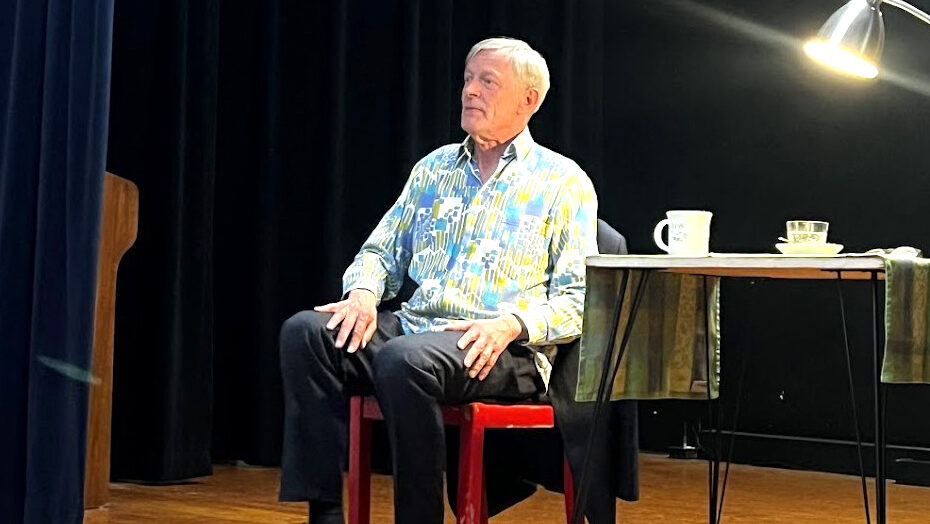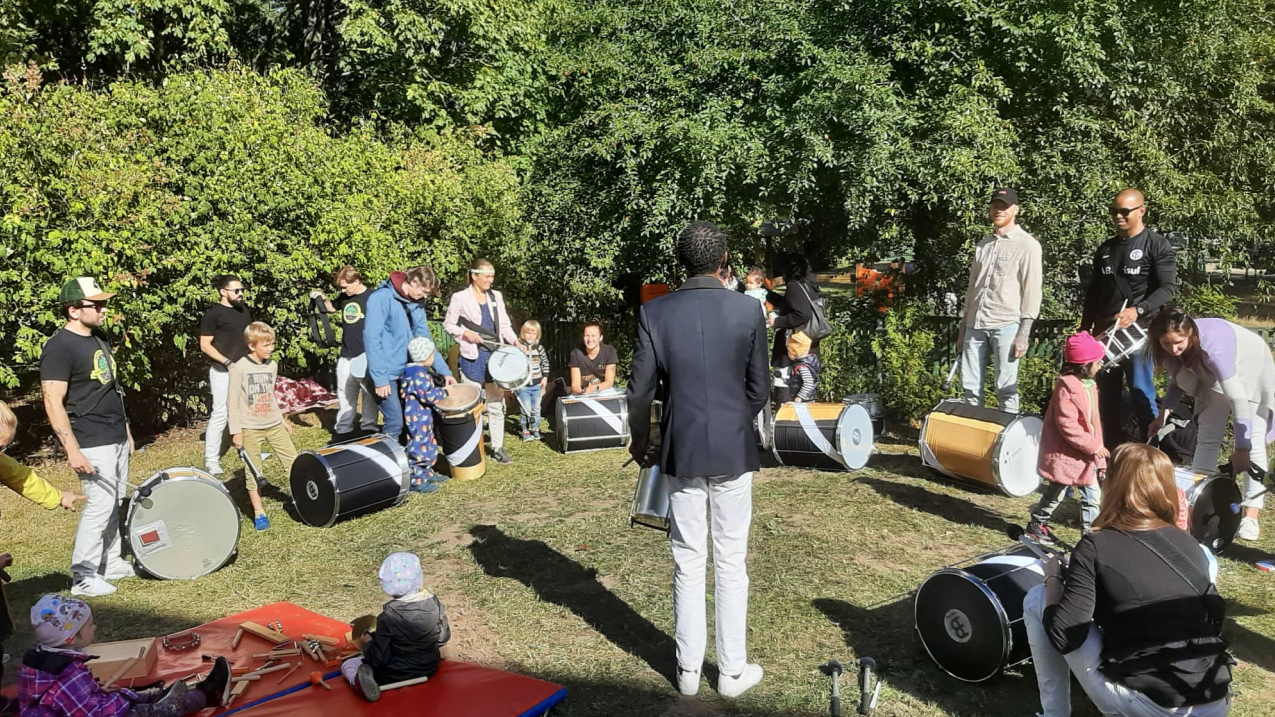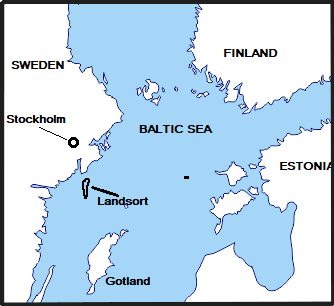
While its craggy granite seaside bluffs and its clusters of pines and hemlocks present a seemingly typical Nordic landscape, Landsort’s shape, its remote location and its history make for a particularly intriguing island to discover. And what’s more – it has numerous fascinating connections to Estonia.
Landsort island is only accessible by ferry – a small ferry for pedestrians and cargo. The ferry only makes the hour long trip from Ankarudden on Sweden’s coast to Landsort and back a couple of times a day. On stormy days the ferry trips are cancelled as it is just too risky to navigate into the two tiny cove harbours on the island. Even on a bright sunny August day, the ferry ride is an exhilarating experience as the ferry rolls over the deep blue sea swells – often with unexpected cold spray crashing over the ferry bow. The island is 4 km long and strangely straight – and incredibly narrow. At a few of the island inlets only 150 m of granite bluffs separate the east and west shores. In the summertime, most of the visitors are hikers and cyclists. As they step off the ferry they head to the island’s only general store and cafe – to buy provisions, rent bikes and get oriented. It becomes quickly apparent that it is impossible to get lost on Landsort as it has only one straight gravel road from one end to the other.
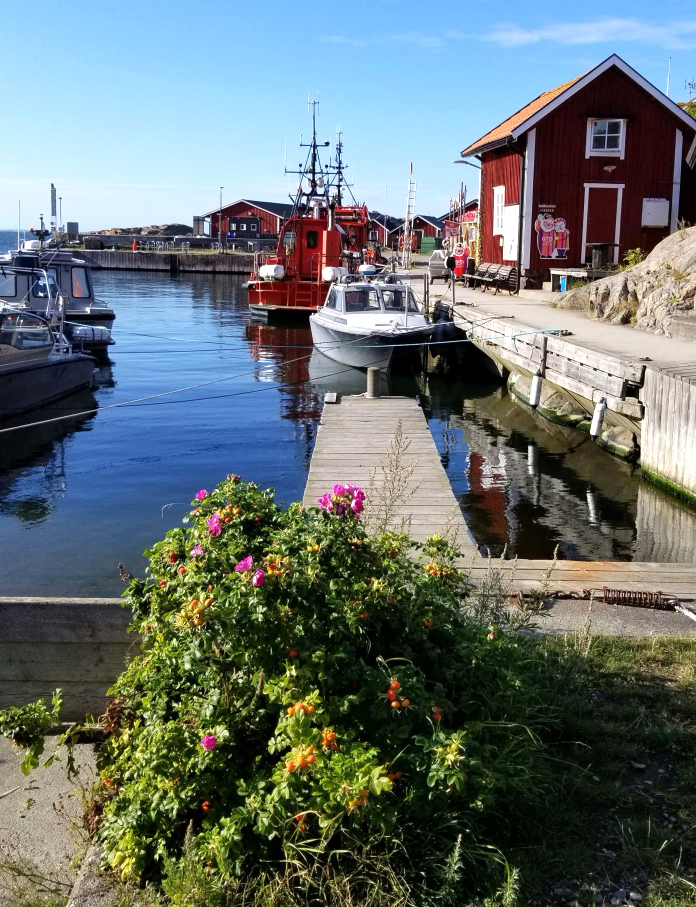
The island of Landsort likely became relevant already in the Vikings era which lasted from about the year 800 to the end of the 1100’s. As the marauding Swedish, Danes and Esths Vikings criss-crossed the imposing Baltic Sea they all likely found Landsort to be a pivotal waypoint and refuge on their seafaring forays. With the emergence of the High medieval kingdoms, the Baltic Sea and its hinterlands became an increasingly important frontier for territorial expansion, new trade routes and for Christian crusades. In the early 1200’s the Danish kingdom made its advances for domination in the Baltic Sea. In 1219 the Danish King Waldermar II invaded the shores of Estonia and with the Battle of Lindanise (at the site of the modern day Tallinn) Estonians were defeated and subjugated to Danish rule. According to records, it seems that King Waldemar used the island of Landsort as a launching base for his Baltic Sea campaigns.
Over the subsequent centuries, commerce and trade routes grew considerably on the Baltic Sea. The Hanseatic League which lasted from the late 12th century to the 15th century brought prosperity and stability to many Baltic Sea towns and regions. Sparsely populated places and smaller islands such as Landsort didn’t have much of a role during those centuries. In the 1600’s however, as commercial ships grew in number and size, special coastal pilots became necessary for guiding ships into Baltic Sea harbours. Such was also the case for the Stockholm area and a pilot station was established on Landsort island. Lighthouses also became more necessary around the Baltic Sea and a large stone lighthouse was constructed on Landsort in 1689. It still stands today, and it is the oldest extant lighthouse in Sweden.
As the Kingdoms of Sweden, Poland and Czarist Russia grew and postured for prominence in the 16th to 18th century, the Baltic Sea and all of its islands once again garnered strategic importance. Cannon batteries were set up by the Swedish defence forces on many islands, including Landsort, along the Baltic coast during this period. Even though the Swedish kingdom declared its neutrality in 1812, Sweden continued to maintain a highly trained military and invested in its coastal defences – to the present day.
In many instances, Swedish coast guard cutters came out to assist the escapee boats and to guide the boats through the heavily mined seas and into the safe harbours. In and around Landsort the cutters brought the escapee boats into Nynäshamn harbour.
While Sweden officially maintained its neutrality during both World Wars, its role during World War II was complicated (as described in Eesti Elu Nr. 40 article “Suurpõgenemine 1944 – Roosevelt, The OK Runabout Cuddy Boats, and the Estonian Escapees”). Fortunately, Sweden was open to accommodating the thousands of escapees from the Baltic countries which were invaded by the Soviet Red Army in 1944. As many articles have described the harrowing escape of Estonians across the Baltic Sea to Sweden in boats large and small, it is known that a certain number of the small boats’ first sighting of land were the shores of Landsort island. In many instances, Swedish coast guard cutters came out to assist the escapee boats and to guide the boats through the heavily mined seas and into the safe harbours. In and around Landsort the cutters brought the escapee boats into Nynäshamn harbour.
Landsort and Sweden’s coastal defence installations during the Cold War
After World War II, the threat of the Soviet Union’s expansion brought on the Cold War – and an ever foreboding arms race between the East and the West. As Sweden lay between the power blocs, and inspite of its declared neutrality, it commenced the massive upgrade of its coastal defence installations. This included the construction of six of the most high tech and atom-bomb proof cannon batteries along its Baltic coast. And Landsort island had one of these critically important batteries that was intended to protect the coastal area up to the Stockholm harbour channels.
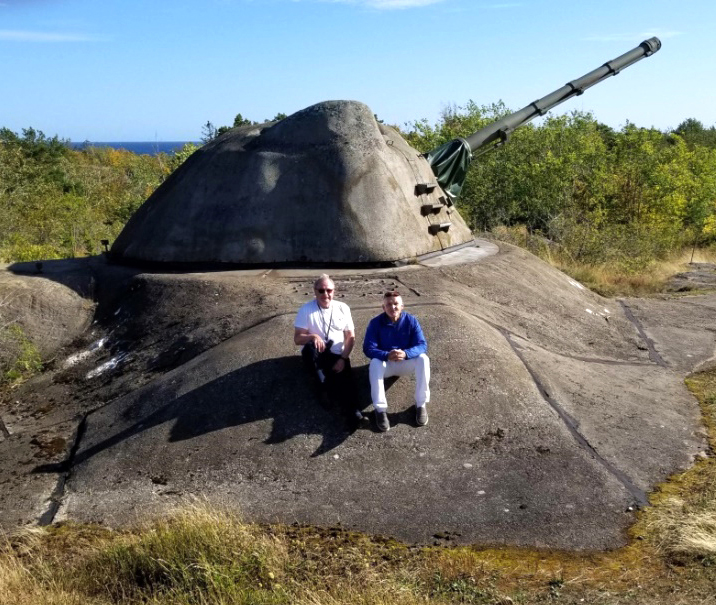
All of these batteries installations were carved deep into the granite bluffs. Behind the atom bomb and chemical attack proof barriers the battery complex extended four levels into the granite. Above ground was an ingeniously disguised turret for a single rapid fire 120 mm cannon with a devastating range of 30 km. Below ground the complex included a command center, ammunition stores, living quarters for the 25 person operation team, a diesel driven power plant and drinking water source from a deep well. What is particularly surprising is that Sweden commenced the construction of these batteries in the mid 1970’s – a time period when many assumed that events such as the Helsinki Conference of 1975 were defusing the threat of Soviet expansion. It would seem that Sweden continued to feel threatened by the Soviet Union up until its demise in 1990. After the breakup of the Soviet Union, Sweden decommissioned the batteries that had been built just 10 to 15 years earlier. The Landsort battery, however, is still intact and is an active museum for the public.

Jaak Kriisa and Landsort
If you are a visitor to Landsort and rent a bike or take a tour of the cannon battery you will likely meet a friendly and chipper Jaak Kriisa. And if you have time to chat he will share his interesting life story. If you mention that you are also of Estonian heritage Jaak will be thrilled to chat with his rusty Estonian language. Jaak was born in Estonia and at the age of 5 he too was one of the children who were part of the Suurpõgenemine of 1944. After his family escaped across the Baltic Sea, they settled in Sweden. Jaak completed his schooling in Sweden and then joined the Swedish military. He became a Stridsvagn tank commander.
In his retirement now he spends time with his Swedish wife at his rustic summer home on Landsort. As he is not comfortable with being idle he runs the bicycle rental and he is also the tour guide and museum curator at the Cold War cannon battery.
After a career in the military, Kriisa became a successful school director – eventually being a director for 3 schools at the same time. As somewhat of a renaissance man, he has also authored a book on philosophy! In his retirement now he spends time with his Swedish wife at his rustic summer home on Landsort. As he is not comfortable with being idle he runs the bicycle rental and he is also the tour guide and museum curator at the Cold War cannon battery.
Landsort is an intriguing “outlier” place to visit and explore. It’s not far from Stockholm.
